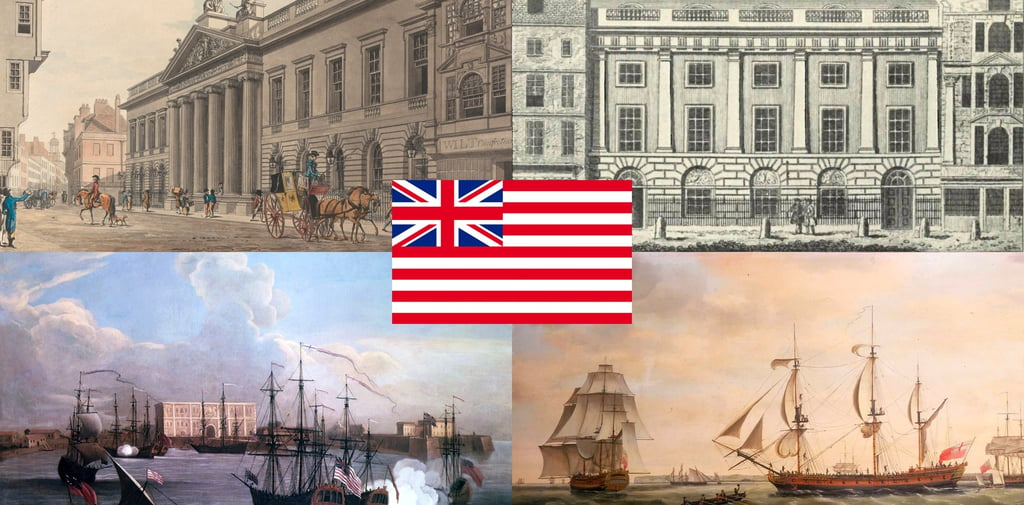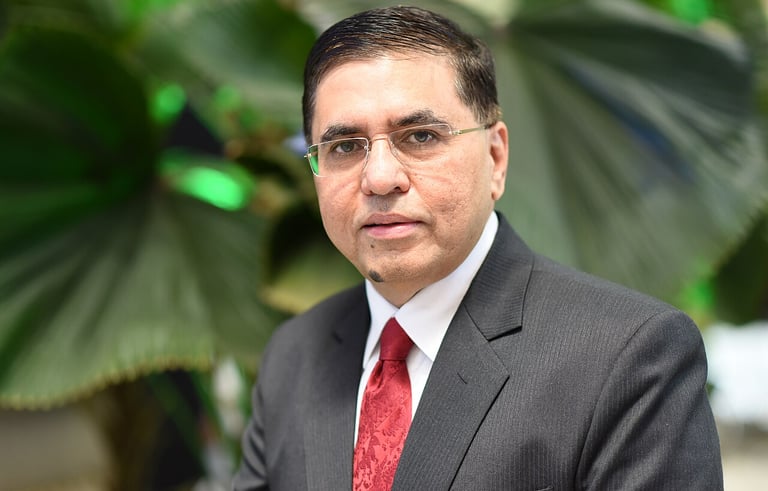𝗧𝗵𝗲 𝗘𝗮𝘀𝘁 𝗜𝗻𝗱𝗶𝗮 𝗖𝗼𝗺𝗽𝗮𝗻𝘆 𝘄𝗵𝗶𝗰𝗵 𝗴𝗼𝘃𝗲𝗿𝗻𝗲𝗱 𝗜𝗻𝗱𝗶𝗮 𝗳𝗼𝗿 𝘁𝘄𝗼 𝗰𝗲𝗻𝘁𝘂𝗿𝗶𝗲𝘀 𝗶𝘀 𝗻𝗼𝘄 𝗼𝘄𝗻𝗲𝗱 𝗯𝘆 𝗦𝗮𝗻𝗷𝗶𝘃 𝗠𝗲𝗵𝘁𝗮 𝗮𝗻 𝗜𝗻𝗱𝗶𝗮𝗻-𝗯𝗼𝗿𝗻 𝗶𝗻𝗱𝗶𝘃𝗶𝗱𝘂𝗮𝗹
The East India Company, once a symbol of British dominance, is now owned by an Indian-born British entrepreneur, Sanjiv Mehta. This essay takes a look at how the East India Company transformed from a colonial powerhouse into a modern luxury brand under Mehta’s ownership.
IN BRIEFNATIONALECONOMY
Thinkbrief
7/14/20254 min read


The East India Company (EIC) is one of the most famous names in history, especially when talking about British colonial rule in India. It was founded in 1600 by a group of British merchants looking to break the Portuguese monopoly on trade with India and the Far East. Over the next two centuries, the company grew into a massive trading empire. Eventually, it governed much of India, becoming one of the central forces in British colonial rule. The company’s influence over India is often seen as the beginning of British imperialism, which changed Indian society, economy, and culture in profound ways. But in a twist of irony, the East India Company, once a symbol of British dominance, is now owned by an Indian-born British entrepreneur, Sanjiv Mehta. This essay takes a look at how the East India Company transformed from a colonial powerhouse into a modern luxury brand under Mehta’s ownership.
The Rise and Fall of the East India Company
The East India Company was granted a royal charter by Queen Elizabeth I in 1600. Initially, it was simply a trading company. British merchants wanted to import goods like tea, spices, cotton, and silk from Asia, breaking the Portuguese control over these markets. But as time passed, the company became much more than just a commercial enterprise. By the 18th century, the East India Company controlled huge parts of India and even had its own army. It used that army to suppress rebellions and expand its power. It wasn’t just a company anymore—it had political and military power. In fact, the company essentially ruled large parts of India, which helped Britain set up a massive colonial empire.
By the 19th century, the company’s power was at its peak. But things started to fall apart. In 1857, the Indian Rebellion, or the Sepoy Mutiny, changed everything. After the rebellion, the British government took direct control of India, ending the East India Company’s rule. In 1874, the company was officially dissolved. Its assets were absorbed by the British Crown. The East India Company’s empire collapsed, but the legacy of British imperialism in India remained, continuing to shape the region for decades to come.
The Revival of the East India Company
Fast forward to 2005, when an Indian-born British entrepreneur, Sanjiv Mehta, bought the East India Company. This move was both symbolic and somewhat controversial. Mehta, who didn’t have any direct connection to the company’s colonial past, purchased it from a group of shareholders for around $15 million. He bought the rights to its name, coat of arms, and seal. But instead of resurrecting the company as a colonial entity, Mehta decided to turn it into a luxury brand, focusing on high-end products like premium teas, coffees, chocolates, and gold coins.
In 2010, Mehta opened the East India Company’s flagship store in London’s upscale Mayfair district, signaling the brand’s transition into the luxury market. This was part of a wider trend where historic brands were being reimagined as luxury items. Mehta’s goal wasn’t to revive the company’s colonial history but to turn it into a symbol of sophistication, quality, and exclusivity. The name “East India Company” and its historical connection to Britain’s imperial past were now being used to sell high-end goods. In a way, Mehta was taking something associated with colonial exploitation and using it to create a brand that was all about luxury and prestige.
While Mehta’s reimagining of the East India Company was a smart business move, it wasn’t without controversy. The company’s history as a colonial power over India wasn’t something that could simply be erased. Mehta acknowledged this but emphasized that his vision of the company was one focused on values like fairness, compassion, and global appeal. The idea that an Indian now owned the company that once ruled India was a powerful reversal of history.
A Symbolic Reversal of History
The acquisition of the East India Company by Mehta is significant, not just for business reasons but also as a symbol. India, once ruled by the East India Company, is now home to the man who owns it. This is a dramatic shift in power dynamics. The company’s legacy, once a reminder of Britain’s imperial control, is now being used to sell luxury goods in the modern world. This change highlights the shift in global power, with former colonies asserting more economic and cultural influence.
Mehta’s decision to turn the East India Company into a luxury brand also speaks to how we deal with the legacies of colonialism today. Instead of ignoring the company’s past, Mehta embraced it, using it to create something positive. The brand may have started as a symbol of exploitation, but under Mehta’s leadership, it now represents high-end products with a focus on global quality. This transformation isn’t just a business strategy; it’s a reflection of how we can reshape the narratives around historical legacies.
Financial Challenges
Despite the promising vision for the East India Company, it hasn’t been smooth sailing. In recent years, the company has faced financial difficulties. In 2025, reports showed that the company was struggling, with unpaid bills to suppliers and several key directors resigning. Legal action was even taken to force payments. These challenges have cast a shadow over the company’s ability to maintain its status as a luxury brand. While it may have started with high hopes, the financial struggles show that even the most iconic brands have to fight to stay relevant in a competitive market.

